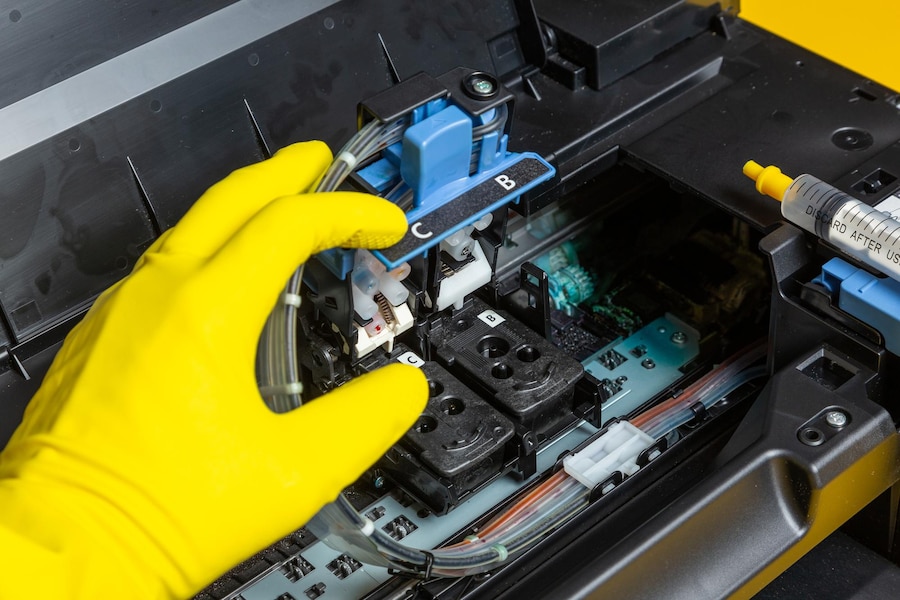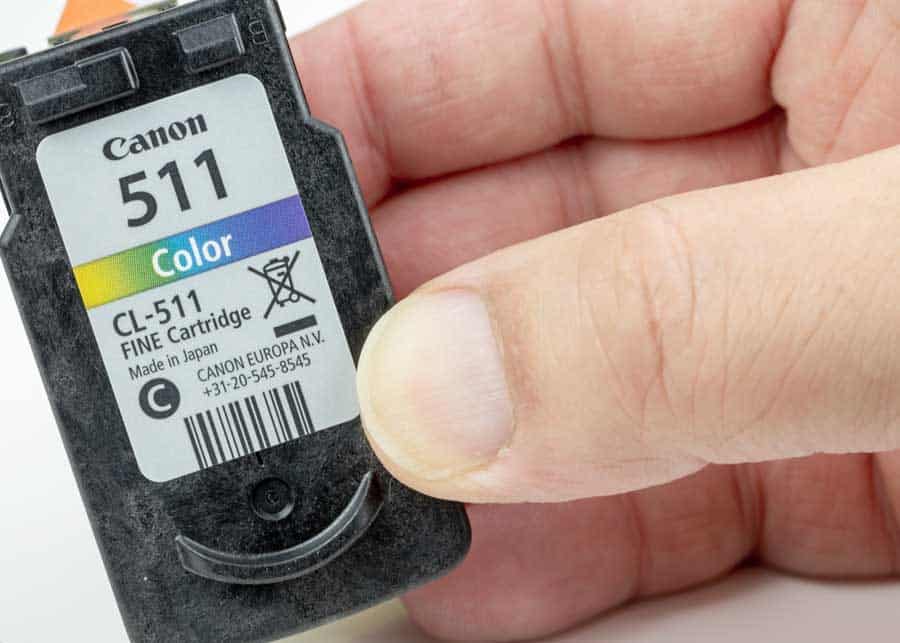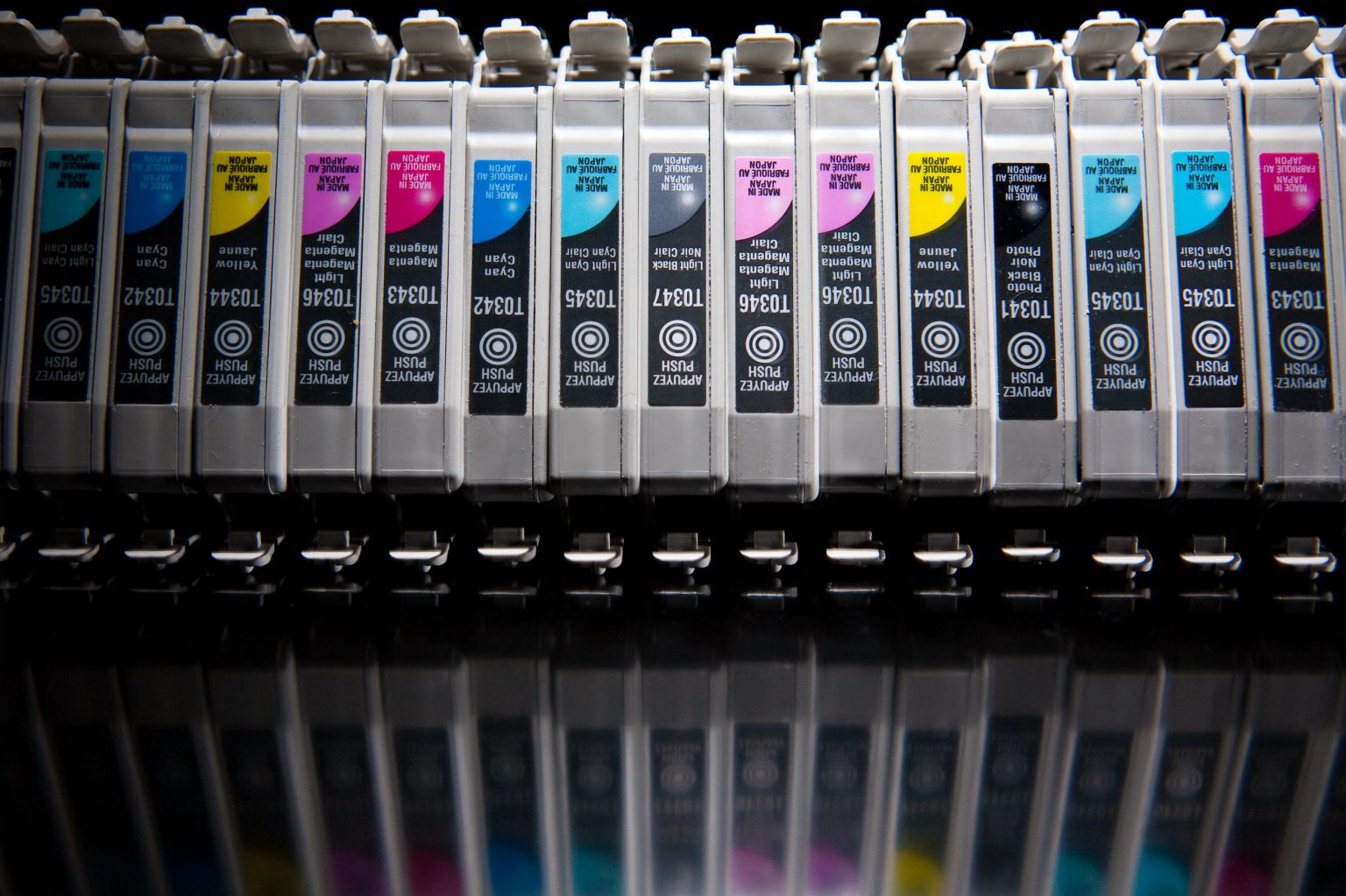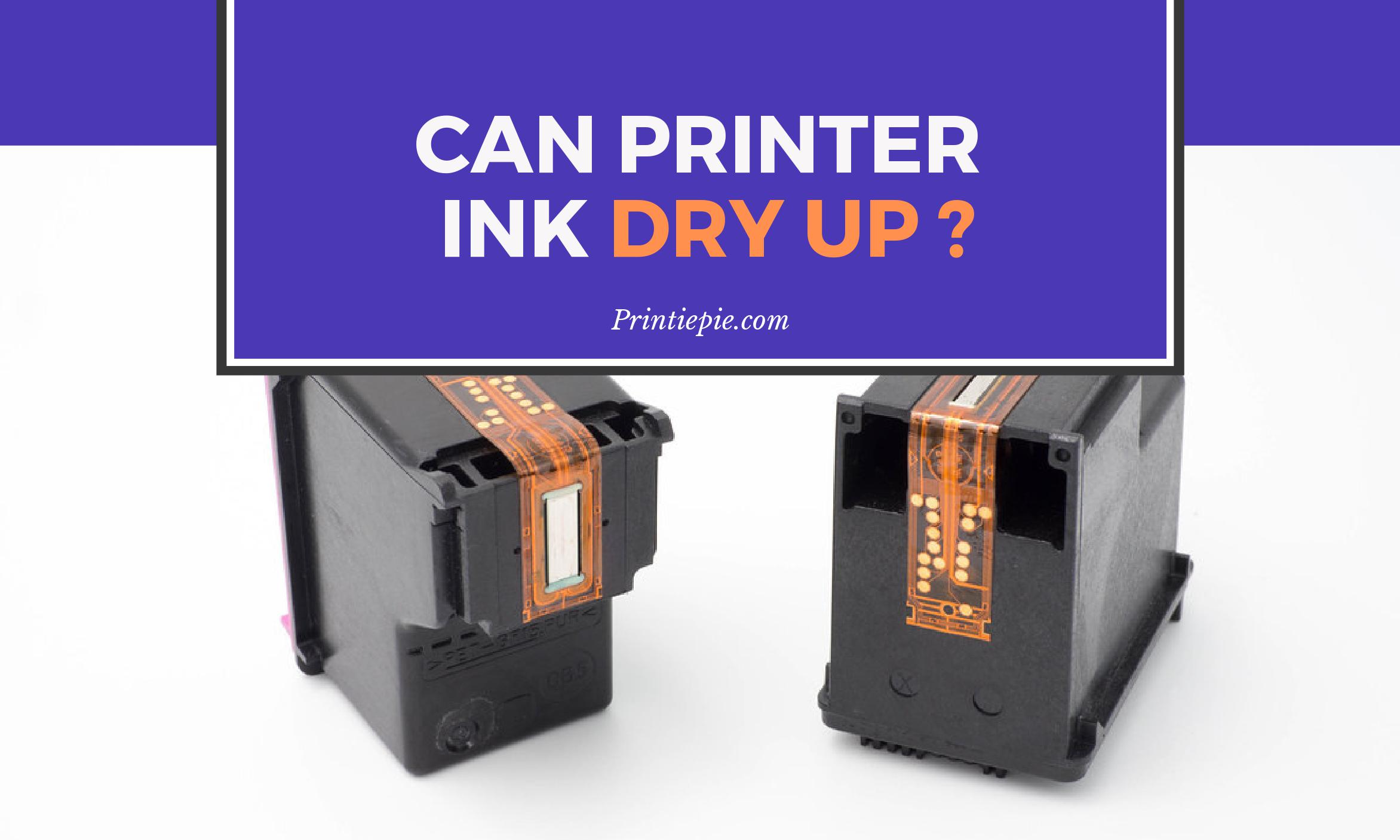Do printer cartridges dry up? It’s a question that plagues every printer owner at some point. The answer, unfortunately, is yes, but not all cartridges are created equal. The lifespan of your ink depends on factors like the type of ink, how you store the cartridges, and even the design of the printer itself.
This guide will delve into the fascinating world of ink cartridge drying, exploring the science behind it, the signs of a dried-up cartridge, and tips for preventing this common printing problem. We’ll also discuss ways to revive dried-up cartridges and offer advice on extending the lifespan of your ink.
So, let’s dive in and learn how to keep those prints flowing!
Understanding Ink Cartridge Drying

Ink drying in printer cartridges is a common issue that can lead to clogged nozzles, poor print quality, and ultimately, a need for a new cartridge. Understanding the factors that contribute to ink drying can help you prevent this problem and extend the life of your cartridges.
Factors Contributing to Ink Drying
The drying of ink in printer cartridges is influenced by several factors, including air exposure, temperature, and cartridge design.
- Air Exposure:When ink is exposed to air, it begins to oxidize and evaporate, leading to a thicker consistency and eventual drying. This process is accelerated in environments with low humidity.
- Temperature:High temperatures can accelerate ink drying, as the heat causes the ink to evaporate more quickly. This is why storing cartridges in hot or humid environments can contribute to drying.
- Cartridge Design:The design of the cartridge itself can also play a role in ink drying. Cartridges with large ink chambers or poorly sealed openings are more susceptible to air exposure and drying.
Types of Ink and Their Susceptibility to Drying
Different types of ink used in printer cartridges have varying degrees of susceptibility to drying.
- Dye-Based Inks:These inks are typically water-based and are known to dry out more quickly than pigment-based inks. They are commonly used in inkjet printers for everyday printing tasks.
- Pigment-Based Inks:These inks are more durable and resistant to fading, but they can also be prone to drying. They are often used in archival-quality printing and photo printing.
- Sublimation Inks:These inks are used in dye-sublimation printers, which create vibrant and long-lasting prints. They are less prone to drying than dye-based inks but still require proper storage.
Signs of Dried-Up Ink Cartridges

You know your printer is having a tough time when the print quality starts to suffer. Dried-up ink cartridges are a common culprit, and their symptoms are often unmistakable.
It’s a bummer when your printer cartridges dry up, especially when you need to print something important, like funeral programs. If you’re looking for a place to print your funeral programs, check out this website: where to print funeral programs.
They have a lot of great options and can help you get your programs printed quickly and easily. Once you’ve got your programs printed, make sure you store your cartridges properly to prevent them from drying out again!
Signs of Dried-Up Ink
Dried-up ink can manifest in various ways, significantly impacting print quality and even damaging your printer. Here are some of the most common signs:
- Faded Prints:The most obvious sign of dried-up ink is faded colors or text. The ink might appear pale, washed-out, or lacking vibrancy. This is because the ink has dried out and can no longer transfer properly to the paper.
- Streaks and Lines:Dried ink can clog the printhead nozzles, leading to streaks or lines appearing on your printed documents. These lines can be horizontal, vertical, or even random, depending on the severity of the clogging.
- Missing Colors:If certain colors are missing from your prints, it could indicate that the corresponding ink cartridge has dried up. For example, if you notice that your red prints are faint or absent, it’s likely that the red ink cartridge needs replacement.
Impact of Dried-Up Ink on Print Quality
Dried-up ink cartridges can significantly degrade print quality, resulting in:
- Blurry Text:Dried ink can cause the text to appear blurry or fuzzy, making it difficult to read. This is especially noticeable in small fonts or detailed graphics.
- Uneven Color Distribution:The ink may not flow evenly from the cartridge, resulting in uneven color distribution across the printed document. This can make images look patchy or faded.
- Smearing:Dried ink can cause the ink to smear or smudge easily, especially when handling the printed documents. This is because the ink doesn’t adhere properly to the paper due to the dried-out nature of the ink.
Consequences of Using a Dried-Up Cartridge
Using a dried-up ink cartridge can lead to:
- Damage to the Printhead:Dried ink can clog the printhead nozzles, potentially damaging the printhead and requiring costly repairs or replacements.
- Reduced Printer Lifespan:Repeated use of dried-up cartridges can put extra strain on your printer, leading to a shorter lifespan. This is because the printer has to work harder to force the dried ink through the printhead.
- Wasted Paper and Time:Using a dried-up cartridge can result in wasted paper and time as you try to get a decent print. This can be frustrating and costly, especially for businesses that rely on high-quality printing.
Preventing Ink Cartridge Drying

Ink cartridges are susceptible to drying, which can lead to clogged nozzles, poor print quality, and ultimately, the need for replacement. Understanding the factors that contribute to ink drying and implementing preventative measures can significantly extend the lifespan of your cartridges and save you money in the long run.
Storing Ink Cartridges Properly, Do printer cartridges dry up
Proper storage is crucial in minimizing ink drying. Here are some tips to ensure your cartridges remain in optimal condition:
- Store cartridges in a cool, dry place, away from direct sunlight and heat sources. Extreme temperatures can accelerate ink evaporation.
- Keep cartridges in their original packaging, if possible. The packaging often provides a protective environment, preventing dust and moisture from affecting the cartridges.
- Avoid storing cartridges in humid environments. High humidity can contribute to ink drying and clogging.
- For long-term storage, consider using a cartridge storage container designed to maintain optimal humidity levels.
Using High-Quality Ink Cartridges
The quality of the ink cartridge plays a significant role in its longevity. High-quality cartridges are designed to resist drying and maintain optimal performance for longer periods.
- Cartridges from reputable manufacturers often utilize higher-quality inks that are less prone to drying. These inks are formulated with additives that help maintain their flow and prevent clogging.
- High-quality cartridges typically have better seals and internal components that prevent air from entering the ink reservoir, reducing the risk of drying.
Benefits of Using Compatible Cartridges
Compatible cartridges are a cost-effective alternative to OEM cartridges. While they may not always offer the same level of quality as OEM cartridges, some compatible cartridges are manufactured to high standards and can effectively prevent drying.
- Compatible cartridges often use high-quality inks and are designed to resist drying for extended periods.
- Many compatible cartridge manufacturers offer warranties and customer support, providing peace of mind regarding their performance and longevity.
Reviving Dried-Up Ink Cartridges

Sometimes, even with the best prevention methods, ink cartridges can dry up. If you find yourself with a dried-up cartridge, there are a few things you can try to revive it. While it’s not always successful, it’s worth a shot before you toss it out.
Methods for Reviving Dried-Up Ink Cartridges
There are a few methods you can try to revive a dried-up ink cartridge. These methods involve cleaning the print head or using specialized solutions to loosen the dried ink.
- Cleaning the Print Head:This method involves physically cleaning the print head to remove any dried ink buildup. You can use a cotton swab dipped in rubbing alcohol or a specialized print head cleaning solution. Be careful not to apply too much pressure, as you could damage the print head.
You should also avoid getting any cleaning solution on the cartridge’s electrical contacts.
- Using Specialized Solutions:There are specialized solutions available that are designed to loosen dried ink. These solutions are typically applied to the print head and left to soak for a period of time. You can find these solutions at most office supply stores or online.
Risks and Limitations
While reviving a dried-up ink cartridge may seem like a good way to save money, there are some risks and limitations associated with this process.
- Damage to the Print Head:If you’re not careful, you could damage the print head while cleaning it. This could lead to further problems with your printer.
- Ineffectiveness:Reviving a dried-up ink cartridge is not always successful. The ink may be too dried out to be revived, or the print head may be damaged beyond repair.
- Compromised Print Quality:Even if you manage to revive the cartridge, the print quality may be compromised. This is because the dried ink can clog the print head, leading to streaks, smudges, or faded colors.
Alternative Solutions
If you’re not comfortable attempting to revive a dried-up ink cartridge, or if the methods above are unsuccessful, you have a few other options:
- Replace the Cartridge:The most reliable solution is to replace the dried-up cartridge with a new one. This will ensure that you have fresh ink and that your printer is working properly.
- Use a Refurbished Cartridge:Refurbished cartridges are a more affordable alternative to new cartridges. These cartridges are typically cleaned and refilled with new ink. However, be sure to purchase refurbished cartridges from a reputable source to ensure that they are of good quality.
Ink Cartridge Lifespan and Maintenance: Do Printer Cartridges Dry Up

Printer cartridges, like any consumable, have a finite lifespan. Understanding how long they last and how to care for them can help you maximize their performance and minimize waste.
Factors Influencing Ink Cartridge Lifespan
The lifespan of an ink cartridge depends on several factors, including:
- Printing Frequency:The more you print, the faster the ink cartridge will deplete. Frequent printing, especially high-volume printing, can lead to faster depletion.
- Printing Quality:High-quality prints, such as photo prints, consume more ink than basic text documents. Choosing a lower print resolution can extend the cartridge’s life.
- Ink Type:Some ink types, like pigment-based inks, are more concentrated and last longer than dye-based inks.
- Cartridge Storage:Improper storage, like exposure to extreme temperatures or humidity, can shorten the lifespan of a cartridge.
- Printer Model:Different printer models have varying ink cartridge capacities and efficiency.
Maintaining Ink Cartridges to Extend Their Lifespan
Maintaining your ink cartridges is crucial to ensure optimal performance and prolong their lifespan.
- Regular Cleaning:Regularly clean the printer’s printhead and ink cartridges to remove dust and debris that can clog the nozzles.
- Proper Handling:Avoid touching the ink cartridge’s nozzle or electrical contacts with your fingers. Use a clean, dry cloth to handle the cartridges.
- Storage:Store unused ink cartridges in a cool, dry place, away from direct sunlight and heat.
- Avoid Overheating:Excessive heat can damage the ink and reduce the cartridge’s lifespan.
- Replace Dried-Up Cartridges:If an ink cartridge has dried up, it’s best to replace it. Attempting to revive a dried-up cartridge can damage the printer.
Importance of Regular Cleaning and Proper Handling
Regular cleaning and proper handling are essential for maintaining ink cartridge health and extending their lifespan.
- Cleaning:Cleaning removes debris that can clog the nozzles and lead to poor print quality, streaks, or ink spills.
- Handling:Proper handling prevents damage to the cartridge’s electrical contacts and ensures smooth operation.
FAQ Section
How long do printer cartridges last?
The lifespan of a printer cartridge varies depending on the type of ink, usage frequency, and storage conditions. Generally, you can expect cartridges to last anywhere from a few months to a couple of years.
Can I reuse old printer cartridges?
While refilling cartridges is possible, it’s not always recommended. Refilled cartridges may not produce the same quality prints as new ones, and they can sometimes damage your printer.
What are compatible printer cartridges?
Compatible printer cartridges are non-OEM (Original Equipment Manufacturer) cartridges designed to work with specific printers. They are often more affordable than OEM cartridges but may not offer the same print quality or reliability.
